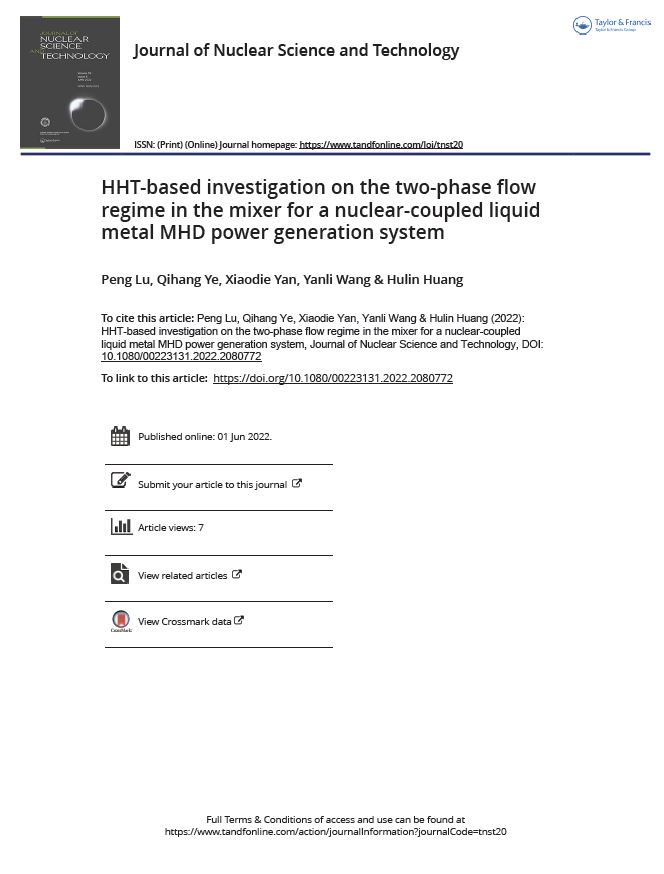Based on the self-designed two-phase mixer prototype, the multiphase flow model combined with a self-compiled UDF program was employed to conduct a numerical study in the present paper. The influences of the inlet velocity and temperature of the liquid metal and the inlet velocity of the low-boiling medium on the two-phase flow regime at the outlet of the mixer were discussed, by using Hilbert–HuangHuang transform. The results indicate that a relatively lower inlet velocity of the liquid metal tends to cause stratified flow, and with a gradual increase of the velocity, stratified flow transforms to mixed flow. At a constant inlet velocity of the liquid metal, raising the inlet velocity of low-boiling medium or the inlet temperature of liquid metal will result in annular flow, with a gas core composed of gaseous low-boiling medium formed in the center of the outlet. In addition, the spectrum of pressure fluctuation signal of the two-phase flow was acquired by Hilbert–Huang transform. It was noticed that as the flow regime changed from mixed to annular flow, the energy indicator k of pressure signal shifted from high-frequency band to low-frequency band.
